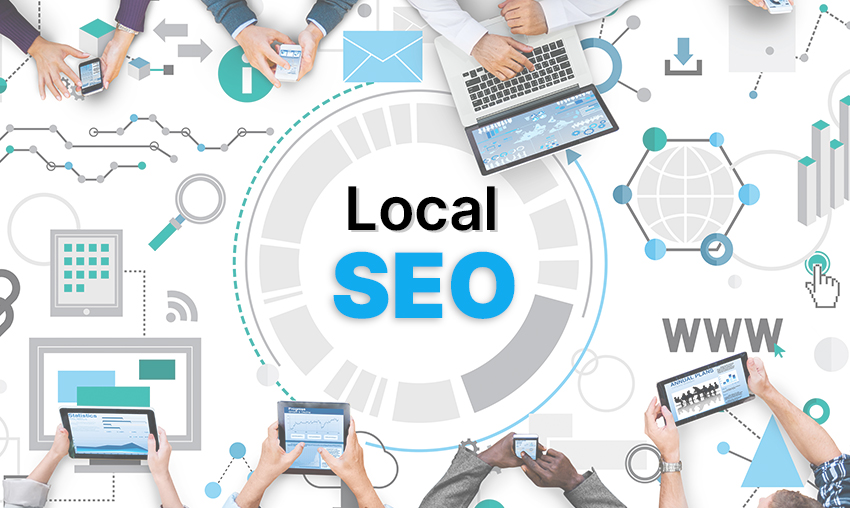
If you’re running a local business and depending heavily on foot traffic, it’s not enough to simply have a storefront and a sign out front. In today’s digital-first world, even local customers are searching online before they visit a physical location. In fact, according to Google, nearly 76% of people who search for something nearby on their smartphone visit a business within a day. That’s why implementing effective Local SEO Strategies is critical for brick-and-mortar businesses that want to remain competitive.
This comprehensive guide will walk you through seven powerful and up-to-date local SEO tactics that can help your business appear in local search results, Google Maps, and “near me” searches. By the end of this article, you’ll be equipped with actionable strategies to improve visibility, boost foot traffic, and increase revenue.
1. Claim and Optimize Your Google Business Profile (GBP)
Your Google Business Profile (formerly Google My Business) is the cornerstone of your local SEO efforts. It’s often the first thing potential customers see when searching for services like yours in their area.
To get started, claim your GBP listing if you haven’t already. Ensure that all information — such as your business name, address, phone number, hours, and website — is accurate and consistent. Add high-quality images, respond to reviews, and use posts to promote events or offers.
Pro Tip: Use keywords relevant to your business in your description, and select the correct business categories. This helps Google understand what you do and match your listing to relevant searches.
2. Ensure NAP Consistency Across All Online Listings
NAP stands for Name, Address, and Phone number. Google uses this data to verify the legitimacy of your business. If your NAP information is inconsistent across directories like Yelp, Facebook, TripAdvisor, and local chambers of commerce, it can confuse search engines and reduce your ranking potential.
Use citation tools like Moz Local, BrightLocal, or Whitespark to scan your online presence and correct any discrepancies. Consistency is key for building trust — both with search engines and potential customers.
3. Leverage Local Keywords and Create Location-Specific Content
Keyword research isn’t just for national brands. Local keyword targeting can help your business rank for queries that matter most, like “best coffee shop in Denver” or “emergency plumber in Phoenix.”
Incorporate these localized keywords into your website’s homepage, service pages, and blog posts. Consider creating city-specific landing pages if you serve multiple locations. Not only will this boost your SEO, but it will also help you connect more personally with your local audience.
4. Focus on Reviews and Reputation Management
Online reviews are digital word-of-mouth — and they carry serious weight in local search rankings. According to BrightLocal, 87% of consumers read online reviews for local businesses.
Encourage satisfied customers to leave reviews on your Google Business Profile, Yelp, and Facebook. Make it easy by sending a follow-up email with a review link or using signage at your location. Always respond to reviews — both positive and negative — in a timely, professional manner. This not only shows engagement but also signals credibility to search engines.
5. Optimize Your Website for Mobile and Local SEO
With mobile searches dominating the web, your website must be mobile-friendly. A responsive design ensures that your site looks good and functions well on all devices. But beyond usability, your site should also be optimized for local search intent.
Include your business’s full address in the footer of every page. Embed a Google Map on your contact page. Use schema markup (specifically LocalBusiness schema) to help search engines better understand your business details.
Speed matters too. Compress images, minimize plugins, and leverage browser caching to improve load times — a critical factor in both SEO and user experience.
6. Build Local Backlinks and Community Relationships
Backlinks from reputable local websites help boost your domain authority and local relevance. Consider partnering with local newspapers, bloggers, business associations, and influencers to earn high-quality backlinks.
Sponsor local events or charities, join your local Chamber of Commerce, and get listed on community boards. The more local context and authority you have surrounding your brand, the better your chances of climbing in local search rankings.
7. Use Social Media to Amplify Local Presence
While social media signals don’t directly impact search rankings, they do influence visibility and engagement. Use platforms like Facebook, Instagram, and TikTok to highlight in-store promotions, behind-the-scenes content, or local partnerships.
Tag your location in posts, use local hashtags, and engage with other local businesses online. This not only boosts your brand awareness but also encourages more foot traffic and local shares.
Bonus: Consider an Online Digital Marketing Course to Sharpen Your Skills
If all this seems overwhelming, or you want to deepen your understanding, consider taking an Online Digital Marketing Course. These courses can help you master SEO, PPC, social media, and analytics — essential skills for any modern business owner or marketing manager.
Courses from platforms like Coursera, Udemy, or LinkedIn Learning offer flexible, affordable ways to stay ahead of the curve.
Final Thoughts
Implementing these Local SEO Strategies is not just a good idea — it’s essential. Local SEO is no longer optional for brick-and-mortar businesses that want to compete in an increasingly digital world. From optimizing your Google Business Profile to engaging with your community, every tactic you apply brings you one step closer to being the go-to choice in your area.
Start with one or two of these strategies today and gradually build on your momentum. With consistent effort and the right tools, your business can thrive both online and off.